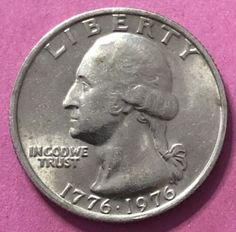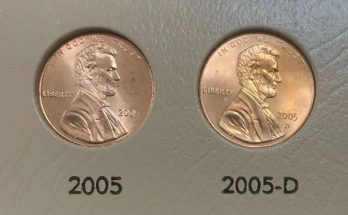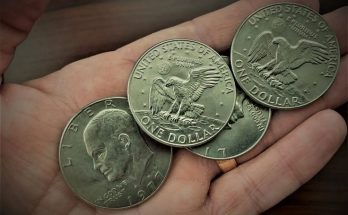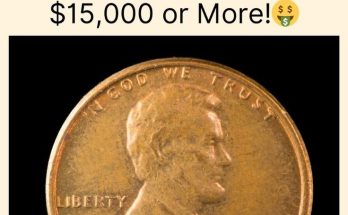Bicentennial Quarter: In the rich tapestry of American numismatics, few coins hold as much historical significance and cultural resonance as the Bicentennial Quarter. Struck in 1975 and 1976, this unique coin commemorates the 200th anniversary of the United States and represents a pivotal moment in the nation’s history. This article delves into the origins, design, production, and legacy of the Bicentennial Quarter, exploring its significance in American culture and its place in the hearts of collectors.
Historical Context: A Nation at 200
The year 1976 marked a significant milestone in American history—the bicentennial of the Declaration of Independence. As the nation prepared to celebrate 200 years of independence, various events, programs, and commemorative items were planned to honor this momentous occasion. The U.S. Mint, recognizing the importance of this anniversary, decided to issue a special series of coins, including the Bicentennial Quarter, to celebrate the nation’s heritage.
The 1970s were a time of social upheaval and change in America. The Vietnam War had left deep scars, and the nation was grappling with issues of civil rights, economic challenges, and a shifting cultural landscape. The Bicentennial celebration provided an opportunity for Americans to come together, reflect on their shared history, and celebrate their achievements as a nation.
Design and Features of the Bicentennial Quarter
The Bicentennial Quarter features a distinctive design that sets it apart from its predecessors. The coin’s obverse (front) retains the familiar profile of George Washington, designed by John Flanagan, which has been used on quarters since 1932. However, the reverse (back) of the coin is where the true innovation lies.
Reverse Design
The reverse of the Bicentennial Quarter showcases a unique design created by artist Jack L. Ahr. It features a depiction of the famous American Revolutionary War symbol, the Minuteman, along with the inscription “1776-1976.” The design is framed by the words “United States of America” and “Quarter Dollar.” This imagery not only commemorates the nation’s founding but also pays homage to the spirit of independence and the sacrifices made by those who fought for freedom.
Minting and Variants
The Bicentennial Quarter was minted in both clad and silver versions. The clad version, made of a copper-nickel alloy, was produced in massive quantities for circulation, while a limited number of 40% silver quarters were minted for collectors. The silver versions are particularly sought after by numismatists due to their precious metal content and limited availability.
The quarters were produced at multiple U.S. Mint facilities, including Philadelphia, Denver, and San Francisco. Each mint produced coins with distinct mint marks, allowing collectors to identify the origin of each coin. The San Francisco Mint produced the proof and uncirculated versions, which were packaged for collectors and sold at a premium.
Production and Release
The production of the Bicentennial Quarter began in 1975, with the first coins being struck in late 1975. The U.S. Mint anticipated high demand for the commemorative coins, leading to an extensive marketing campaign that encouraged Americans to collect the entire series of Bicentennial coins, which also included the Bicentennial Half Dollar and the Bicentennial Dollar.
The Bicentennial Quarter was officially released into circulation on April 1, 1976, and quickly became a popular item among both collectors and the general public. The coin’s unique design and the significance of the bicentennial celebration contributed to its widespread appeal.
Cultural Impact and Significance
The Bicentennial Quarter holds a special place in American culture, symbolizing the nation’s resilience and unity during a time of change. The coin was not only a means of commemorating the past but also served as a reminder of the values and principles that underpin American democracy.
A Symbol of Unity
The Bicentennial celebration brought Americans together in a spirit of patriotism and pride. Communities organized parades, fireworks, and festivals to mark the occasion, and the Bicentennial Quarter became a tangible representation of this collective celebration. The coin was often given as gifts, used in commemorative events, and collected as a cherished keepsake.
Educational Value
The Bicentennial Quarter also served an educational purpose, teaching younger generations about the nation’s history and the significance of the Declaration of Independence. Schools and educational institutions incorporated the coin into lessons about American history, fostering a sense of pride and awareness among students.
Collecting the Bicentennial Quarter
For numismatists and collectors, the Bicentennial Quarter represents a fascinating addition to any collection. The coin’s unique design, historical significance, and variety of mint marks make it a sought-after item among enthusiasts.
Grading and Value
The value of the Bicentennial Quarter can vary significantly based on its condition, mint mark, and whether it is a clad or silver version. Coins in uncirculated condition or those with a high grade from professional grading services can command higher prices in the market. Collectors often seek out specific mint marks, such as the “S” mint mark from the San Francisco Mint, which is associated with the proof versions.
Tips for Collectors
- Research: Understanding the different variants, mint marks, and grading systems is essential for collectors.
- Storage: Proper storage in protective holders or albums can help preserve the condition of the coins.
- Networking: Joining numismatic clubs or online forums can provide valuable insights and connections with fellow collectors.
The Legacy of the Bicentennial Quarter
As time has passed, the Bicentennial Quarter has solidified its place in American numismatic history. It serves as a reminder of a significant moment in the nation’s journey and continues to be cherished by collectors and history enthusiasts alike.
Continued Popularity
Even decades after its release, the Bicentennial Quarter remains popular among collectors. Its unique design and historical significance ensure that it will continue to be a sought-after item in the numismatic community. The coin is often featured in educational programs and exhibits, highlighting its importance in American history.
A Lasting Tribute
The Bicentennial Quarter stands as a tribute to the ideals of freedom, unity, and resilience that define the United States. It encapsulates the spirit of a nation that has overcome challenges and continues to strive for a better future. As collectors pass down their coins to future generations, the legacy of the Bicentennial Quarter will endure, inspiring a new wave of appreciation for America’s rich history.
Conclusion
The Bicentennial Quarter is more than just a piece of currency; it is a symbol of a nation’s journey, celebrating the values that unite Americans. From its unique design to its cultural significance, the coin encapsulates a pivotal moment in history and continues to resonate with collectors and enthusiasts today.
As we reflect on the Bicentennial Quarter, we are reminded of the importance of commemorating our past while looking forward to the future. This remarkable coin serves as a testament to the enduring spirit of America and the ideals that continue to shape the nation. Whether you are a seasoned collector or a casual observer, the Bicentennial Quarter offers a glimpse into the heart of American history and the pride that comes with it.
In a world where currency is often seen merely as a means of exchange, the Bicentennial Quarter stands out as a cherished artifact, a reminder of the values that define us as a nation, and a celebration of the journey that has brought us to where we are today.



